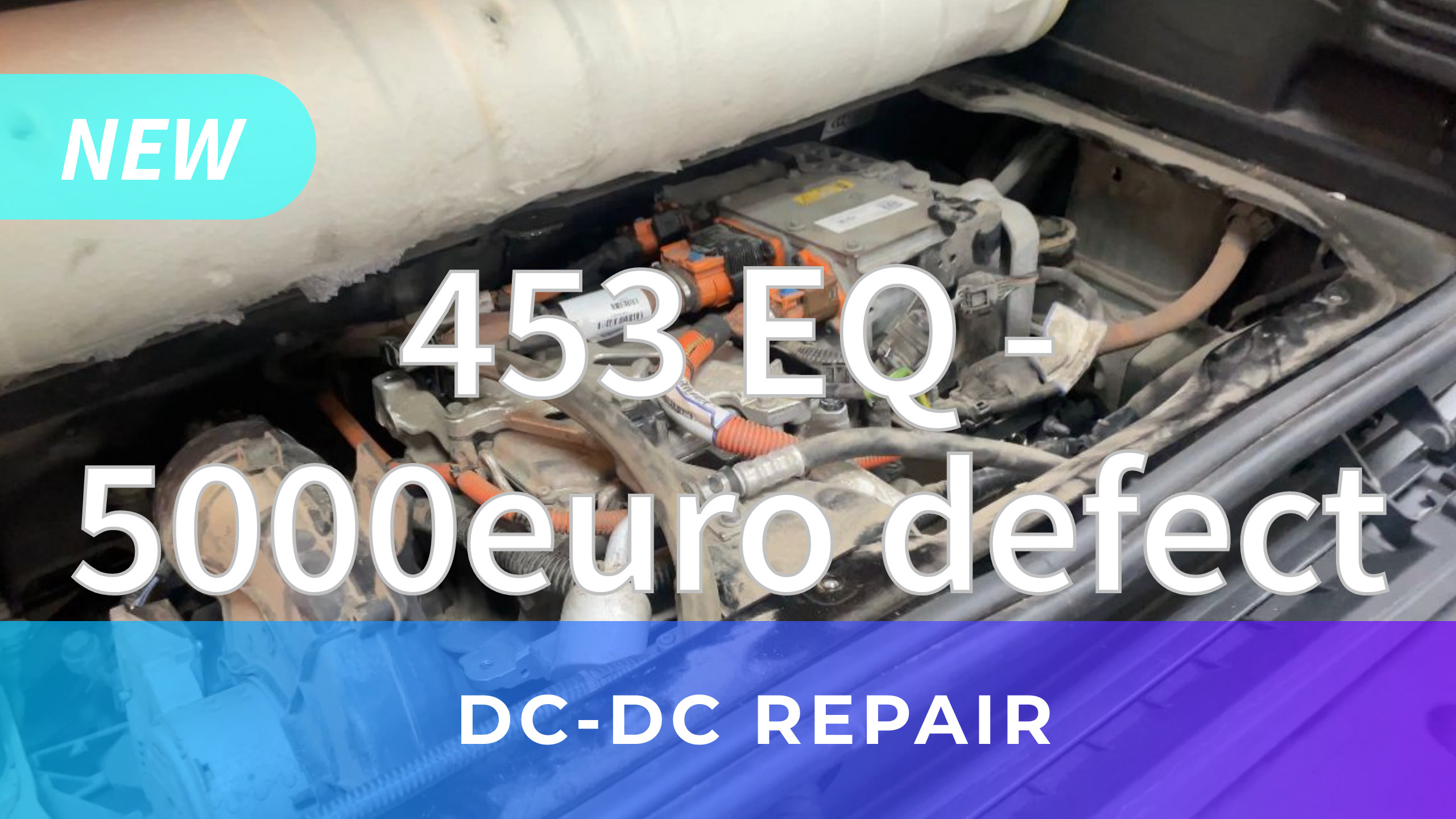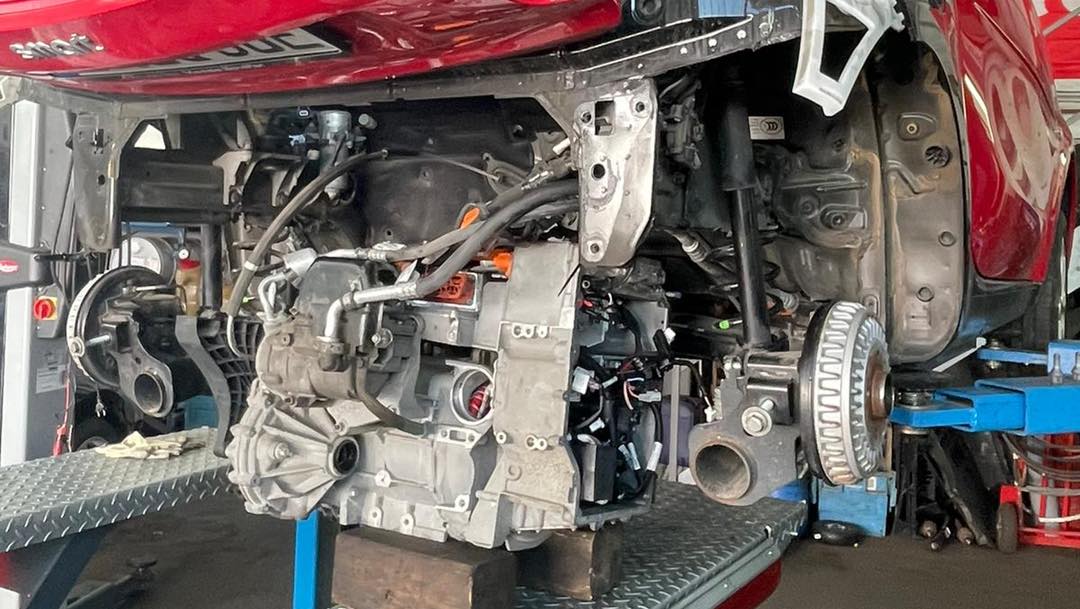
Smart 453 EQ – A Costly and Challenging Repair Landscape
After extensive testing and repeated analysis, we have found that this vehicle presents some of the most complex and costly repair challenges in recent automotive history. Many critical components are integrated in such a way that even minor malfunctions require the removal of the entire electric powertrain—a time-consuming and expensive process.
For instance, if the DC-DC buck converter (which charges the 12V battery from the high-voltage system) fails, accessing it requires dismantling a significant portion of the vehicle, including 350 bolts, cables, connectors, and covers. However, what makes the situation more problematic is that, instead of replacing just the defective component, the standard repair procedure at authorized service centers involves replacing the entire drive unit at a cost of approximately €5,500.
Bundled Replacements & High Repair Costs
If a failure is diagnosed in the DC-DC converter, the entire RLC filter, DC-DC converter, onboard charger (OBC), and VFD inverter are all replaced simultaneously—every time. Similarly, if the onboard charger (OBC) fails, the entire assembly is replaced again because all components are integrated into a single aluminum housing on the electric motor.
- No individual component sales: The manufacturer does not offer separate replacements for these parts, making every repair a full powertrain replacement at a minimum of €5,500.
- Drive motor issues: We have also observed instances of electric motor failures (buzzing, scraping, rattling, etc.) appearing at approximately 100,000 km, though further analysis is needed.
- Warranty limitations: The warranty for these crucial components is only 2 years or 20,000 km, meaning many owners encounter major repair costs early in the vehicle’s lifespan.
Battery Management & Programmed Faults
Beyond powertrain replacements, we have identified multiple recurring issues affecting the high-voltage battery system, including:
- BMS hardware failures (serial defect)
- Firmware-related BMS errors
- Crash lock & counter limitations
- Recurring warranty disputes over repair eligibility
Over the past two years, EV Clinic has researched and documented every possible failure mode, as well as all available solutions and repair methods. Unfortunately, these issues significantly impact the reliability and long-term sustainability of the Smart 453 EQ, which otherwise serves as an excellent urban EV.
Industry Trends & Manufacturer Strategy
These challenges are not exclusive to the Smart 453—we have observed similar powertrain issues across multiple electric models from this manufacturer since 2010. While we remain committed to finding sustainable repair solutions, it is evident that these design choices lead to high long-term ownership costs for EV drivers.
Part number: A4533404500, 292A05698R
Error: P0852F1, P085296
OEM Workshop: 5500 euro
EV Clinic: 1500 euro
What we offer:
-Full powertrain disassembly training
-Full DCDC Repair training
-Full OBC Repair training
-Full Drive inverter cloning, programming and repair training
-Full Battery repair training
-Full BMS software reading, writing and programmed defect reset training

















